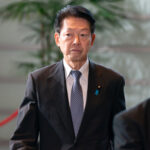America’s education system was a groundbreaking effort to help a growing nation thrive in the 19th century. Now, 200 years later, the world has changed; the horizon looks drastically different. Collectively, we need to redesign our education system to enable all of our children — and, by extension, our nation — to thrive today and tomorrow. “Horizon Three” or “H3” names the future-ready system we need, one that is grounded in equity serving learners’ individual strengths and needs as well as the common good. This series provides a glimpse of where H3 is already being designed and built. It also includes provocations about how we might fundamentally reimagine learning for the future ahead. You can learn more about the horizons framing here.
What are your desired outcomes for young people? When engaging in the co-design process to create an ideal learner-centered ecosystem, this is the question we always start with at Learner-Centered Collaborative. Across the 40+ public school systems we work with, we bring together key stakeholders—parents, youth, teachers, principals, district leaders, community members, and industry experts—who offer remarkably similar aspirations no matter their geographical or cultural context. We consistently hear different versions of: “We want young people to be safe, happy, successful, resilient, effective communicators and collaborators, and to have the agency and confidence to chart their paths based on their strengths, goals, and opportunities.”
However, many students express that school feels irrelevant. They feel the experiences, constraints, and busy work don’t prepare them with the skills we all hope they will gain and the world demands they have as Antonia Rudenstein describes in her article, What should Young People Get Really Good At? Data backs this up: indicators like attendance, disengagement, and stress show a clear disconnect between the experience in schools and the skills necessary to thrive now and in the future.
In today’s rapidly evolving world, the traditional school-centered model no longer prepares students for life beyond the classroom. To truly serve every learner, we need to shift to a learner-centered paradigm, where schools are reimagined as dynamic community hubs that place learners and their growth at the heart of every decision. This shift isn’t just about a narrow view of academic success; it’s about nurturing the whole learner. In these environments, learners embrace challenges, navigate complexity, leverage technology, solve problems, and learn how to learn as the world continues to change.
Realizing our aspirations for young people requires us to consider how, what, and where they learn. Many districts are bringing their Portrait of a Learner to life by moving from school-centered systems to learner-centered systems. Promising models are emerging, offering innovative approaches and pushing the boundaries of what is possible. We don’t believe there is one right way—there are many, shaped by your goals, community, and context. As Tom Vander Ark highlights, we need more school models to continue to expand our collective view of what is possible. The following examples offer a glimpse into how school systems are leveraging these models and centering learners by design.
Designing for Learning
In Lamont Union School District, a K-8 district in Central California, they launched a new elementary microschool where 4-6 grade levels are placed in multiage classes to learn and collaborate on community projects. Although it is in the beginning stage, they are already seeing increased engagement and progress on their Portrait of a Learner outcomes. Superintendent Dr. Lori Gonzales recently shared that the microschool is helping “build collaboration, a resilient learner, and someone who really is able to articulate in a different manner.” As Sujata Batt highlighted in her article, The Next Horizon, with a bold and compelling vision from school and district leadership and support from the community, educators are collaborating, learning, and designing new and better opportunities for the learners they serve.
Students at Lewisburg School in Logan County, Kentucky similarly engage in exploratory programs to gain exposure and access to different experts and community members. They explore ideas of interest to them and solve problems they find important through passion projects.
The learners shared that they get to take part in the Ranger Academy where all students choose topics of interest for exploration such as sewing, building, cooking, and community service projects. One group shared they had put on a fundraiser to raise money for Ally, a fellow student who needed money for a health condition. Three girls put together a program called “New Kids on the Block” to ensure each new student had a person to connect and sit with at lunch along with a welcome bag of goodies to make them feel like part of the community. Another group saw a need for their teachers’ desks and workspaces to be more organized and worked with their teachers to build organizers.
Although they acknowledge that sometimes it’s hard to collaborate with others, and it can take a while to figure out how to do a project, nor do you always get it right, they learned more than just content knowledge. They loved learning about new things, working from their strengths, meeting new people, seeing different perspectives, and above all, engaging in personally meaningful work addressing real challenges in their community.
As Paul Mullins, the former Superintendent of Logan County schools shared with me, “We aren’t just creating students, we are creating better citizens.” In talking to these students, it was evident that they are already able to engage in our communities productively and work to make their communities and world a better place.
Learning that Matters
In Laguna Beach (CA), the district has been encouraging and supporting teachers to engage in lesson redesign and creating opportunities for students to engage in authentic, project-based learning. Logan Teeple, a high school senior, shared in his TEDx Talk, How Crashing Teaches Us to Fly, how he learned through his Authentic Exploratory Research class. He highlights, “We choose what we want to learn and how we want to learn with guidance from an expert on the field as our mentor.”
In addition to his project, his peers have a wide variety of topics they are exploring based on their unique interests. The content is not prescribed, but it isn’t irrelevant either. These students have to develop both knowledge and skills to research, use calculations, and scientific concepts. They have to understand politics, civilizations, and motivations to create new ideas and solutions. Ultimately they have to read, write, and communicate effectively to share their lessons learned as well as influence people to pay attention to their ideas.
As Logan and his classmates dive into the research, he notes they are learning deeply about a lot of content such as how multiethnic countries collaborate (or don’t), how to install new traffic policies, and how to make a plane fly. But, he notes, “We aren’t doing this through slide shows or boring online assignments. We are getting our hands dirty and our minds confused for the joy of learning. This is real education.” Logan’s example highlights that instead of focusing on content and its specific role in the future of education, maybe the better focus should be on what is the best approach to learning the content and why it matters.
Creating Pathways to Success
The Forney ISD Opportunity Center in Dallas is forwarding a bold reimagining of the traditional high school experience by offering a learner-centered environment tailored to meet the diverse needs of its students. Moving away from a one-size-fits-all model, the Opportunity Center provides a more flexible, personalized learning experience that allows students to pursue academic and career pathways that align with their individual goals and interests.
With a focus on real-world skills, community engagement, and student agency, the center creates a supportive space where learners can thrive academically, socially, and emotionally. By integrating hands-on learning opportunities, mentorship, and access to a range of resources, Forney ISD is redefining what high school can be, ensuring that every student is empowered to take ownership of their education and future success.
The Future of Education is Learner-Centered
Shifting to a learner-centered paradigm—a vision that transcends outdated, school-centered models reinvigorates and redefines schools as essential hubs within their communities. By redesigning public schools around the principles of flexibility, personalization, and community engagement, we can build a system where every student has the opportunity to succeed.
A learner-centered approach empowers students, families, and educators to shape learning experiences that are relevant and responsive to individual needs, eliminating the one-size-fits-all structure that has long constrained public education. By centering public schools in this transformation, we can both preserve and enhance them as critical, accessible resources that serve the whole community—ensuring the future of our education systems are robust and adaptable institutions that evolve with the changing times.
This blog series is sponsored by LearnerStudio, a non-profit organization accelerating progress towards a future of learning where young people are inspired and prepared to thrive in the Age of AI – as individuals, in careers, in their communities and our democracy.
Curation of this series is led by Sujata Bhatt, founder of Incubate Learning, which is focused on reconnecting humans to their love of learning and creating.
The post Centering Learners by Design: Shaping the Future of Education appeared first on Getting Smart.
Discover how innovative, learner-centered designs are transforming education to better prepare students for the future.
The post Centering Learners by Design: Shaping the Future of Education appeared first on Getting Smart. Learning Design, New Pathways, H3, Learner-Centered, Microschools, new learning models, personalized learning, student engagement Getting Smart






